A message from the editor:
Sonic, Social, Distance
As more than a third of the planet’s human population has gone into some sort of social restriction…self-isolation, social isolation, physical distancing, quarantine…since those who have the luxury of walls have gone behind them–time has not so much stood still, but became fragmented and blurred. Our schedule markers have gone virtual, or gone away, or are far away. As artists of various media attempt to capture some essence of this time, it may be found that fragments, notes, moments, and blurs, are what express better our experience. Text, audio, visual-both moving and still, compilations, complications, towards combobulations, if that is what comes. This is a time-capsule archive of finished works, and of fragments, reflecting a fragmented time. Fragments that feel frozen or appropriate as they are, and would then be placed with other fragments to create an unanticipated whole.
Sonic, Social, Distance, is calling for works on listening and sound, and thinking about listening and sound, in the time of social distance…alone together, together apart. We are calling for full texts, as well as text with media, or fragments and notes that will be curated and compiled together. This call is on-going, until it no longer makes sense.
A year of the pandemic, and approaching soon a year since this call first went out–our homes, our spaces and places, have fluctuated sonically their quiets and louds. Some places that were noisy became quiet with their emptying of people. Some homes that were quiet became loud with people home and restless. Archives of these soundscapes recorded all over the world continue to compile, hoping a future might access a sense of this time, and a now might access a sense of camaraderie while alone, together. The personal archive can be a meaningful record, as artist and educator Scott Sherk will share with us now…

By all means record your soundwalks, stick your mic wherever you want to and produce a butterfly museum of your everyday – just don’t expect it to be listened to.[i] — Salome Voegelin
After day 35 of our self-quarantine for Covid-19, I decided to listen to all five volumes of Toshiya Tsunoda’s Extract from Field Recording Archive.
It was dreary and wet, inside and outside. It was Sunday, and after doomscrolling through the papers, I felt like tackling something significant.
Toshiya Tsunoda is a fascinating and enigmatic sound artist. Schooled as a visual artist with an MFA, he moved towards aural works in the early 1990’s. Like many of us, he experimented with tape recorders as a teenager, often recording the sounds of Nagaura Harbor near his home. Early on, he identified a characteristic drone that he heard in the early mornings, probably coming from the harbor. He recorded these sounds and recognized that he was capturing a piece of the landscape. This made a deep impression on him, and he began examining the sonic phenomena of stationary waves.
I was introduced to Toshiya Tsunoda through Will Montgomery’s informative piece in Wire Magazine[i]. I was familiar with some of his field recordings of generally quiet, subtle, expansive soundscapes in which all the aural detritus of modern life is included and incorporated into the sound. Reclaimed Land on the compilation CD, Overland, is a fifteen-minute field recording of the gentle rushing of traffic, airplanes, occasional voices, a car radio, a siren, and strange crackling noises on a blanket of insects. The space is expansive with several levels of physical depth and a broad panorama. I also knew Small sand-stream on a beach from the collection Audible Geography, a mysterious recording of crackling sand(?) and wind. These works are very different from the pristine natural world or heroic adventures one associates with the genre of field recording; and for this reason, I have found them fascinating. Extract from Field Recording Archive exists on another level conceptually and aurally.
Extract from Field Recording Archive is a collection of five CD’s in a beautiful white box with a booklet printed in both English and Japanese. This handsome object was designed by Yuko Zama, who also co-produced it with Jon Abbey of the excellent and adventurous Erstwhile Records. Discs 1-4 are sounds that Toshiya Tsunoda collected between 1993 and 1999, and the final disc are more recent recordings, mostly from 2018. I would like to discuss these recordings by sharing my notes as I listened to the five discs, and end with some comments.
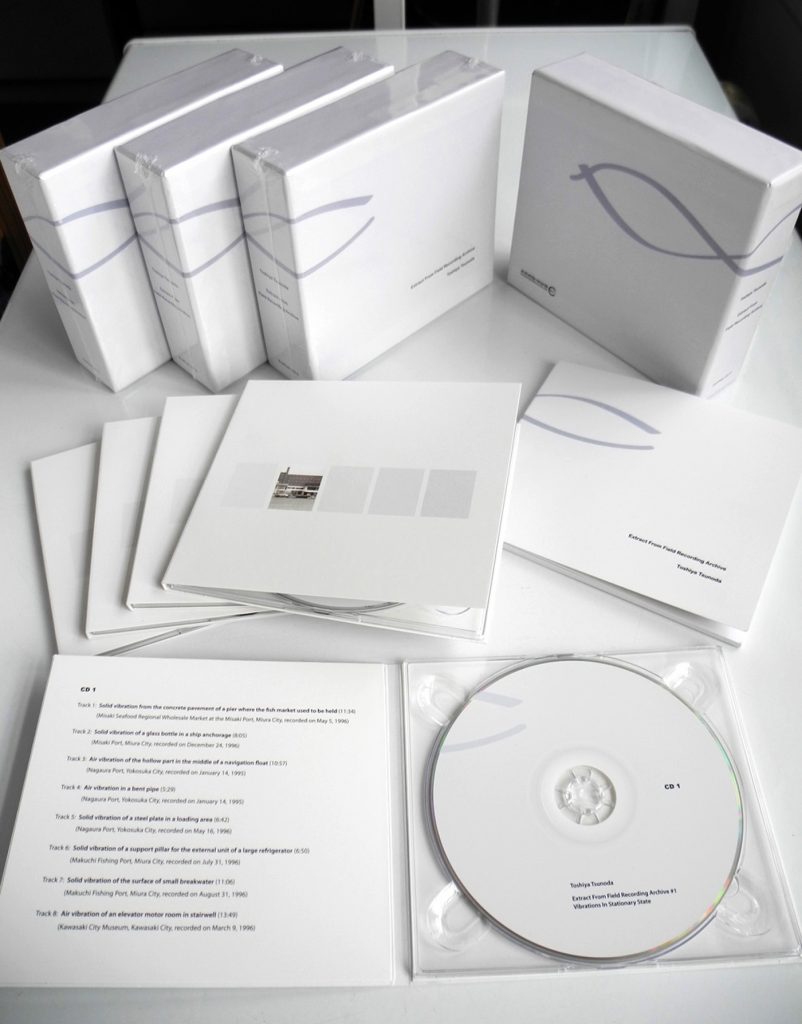
The collection is a series of recordings of vibrations collected along a harbor using contact microphones (piezo discs) and occasionally small omni lavalier microphones (Cos-11). Both the sounds and the project itself defy easy categorization. The first CD, Disc 1, is a collection of recordings of stationary vibrations of solid objects. The sound is initially surprising and somewhat off-putting. Let me describe my experiences listening that began on that Sunday afternoon.
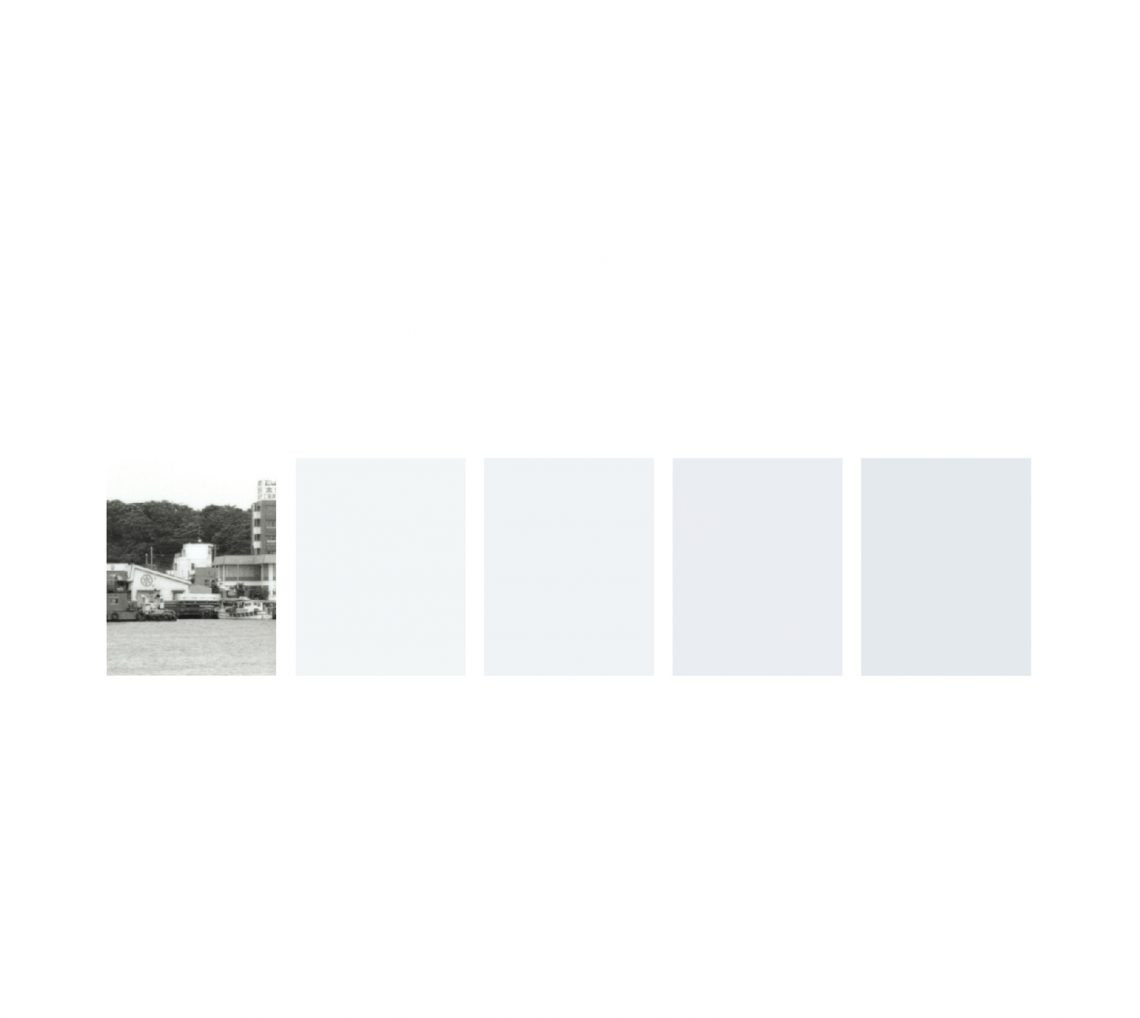
Disc #1
This was not the first time I had begun to listen to Extracts. My previous attempts had been thwarted by an overwhelming lethargy. I’d make myself comfortable in my chair, adjust the volume with my remote, and begin listening to Disc 1. For some reason I would fall asleep almost immediately. The first two tracks are sometimes pleasant, sometimes abrasive solid-state hums that have never failed to lull me into a deep hypnotic state. In spite of my best intentions, this time was no exception. I missed Track 2, and can’t say that I was really conscious until Track 6. At Track 6 I woke up, and I began listening with interest and concentration. Track 7 was almost inaudible from my chair, but I hesitated to turn up the volume having been burned too often by sudden volume changes in field recordings. Instead, I got up, put my head next to one of the speakers and detected the vibration of a small breakwater.
I will begin describing each track in more detail.
Track 8: A recording of an elevator room in a museum.
By Track 8 everything changed— I was hooked! The vibrational drone has clear harmonics and a sense of space is established because I could grasp a context—an elevator going up and down, vibrating, banging, and humming. As I listened I began to understand. In the liner notes/booklet, Toshiya Tsunoda draws a distinction between “space” and “place”. A “place” he defines as a specific location with all of its local attributes. A “space” is a more objective concept that he seems to suggest is on a higher Platonic plane. “Spaces,” rather than “places,” should be considered the subject of his artwork, although he writes, “I eventually realized that this idea was just a one-sided point of view.”
For me Track 8, the elevator shaft, was the most compelling recording probably because it was a “place.” It was also a collection of things—things that vibrate. Disc 1 introduces us rather abruptly to Tsunoda’s world of vibrations. Most of the disc consists of vibrational humming that appears to be solid state with little variation. (The charm of this collection is how this perception changes.) Track 8 has more variation and identifiable objects, and it is the objects vibrating in space that that captures my attention.
By the end of Disc 1 I also began to get a feel for Tsunoda’s project. These early works are examples of the impulse to document, collect and archive. They reflect a movement within photography that assumes a fiction of distance and objectivity. (See my essay, Phonography: Art or Documentation in Field Notes .) [ii] With parallels to the world of photography and with an intense concentration on “the everyday”, these recordings are in stark contrast to the exotic field recordings of hyenas eating carrion or the incredible cacophony of the rainforest. The sound of the vibrations of a pier caused by ship’s engines, or the vibration of anything caused by a motor or engine is part of our “everyday.” What becomes increasingly clear as I begin Disc 2 is that Tsunoda’s collecting of this work is just one part of his project. Organizing it becomes another, and the discs begin to reflect this organizational program. The vibration of solid objects is the subject of Disc 1. The vibration inside hollow objects becomes the subject of Disc 2.
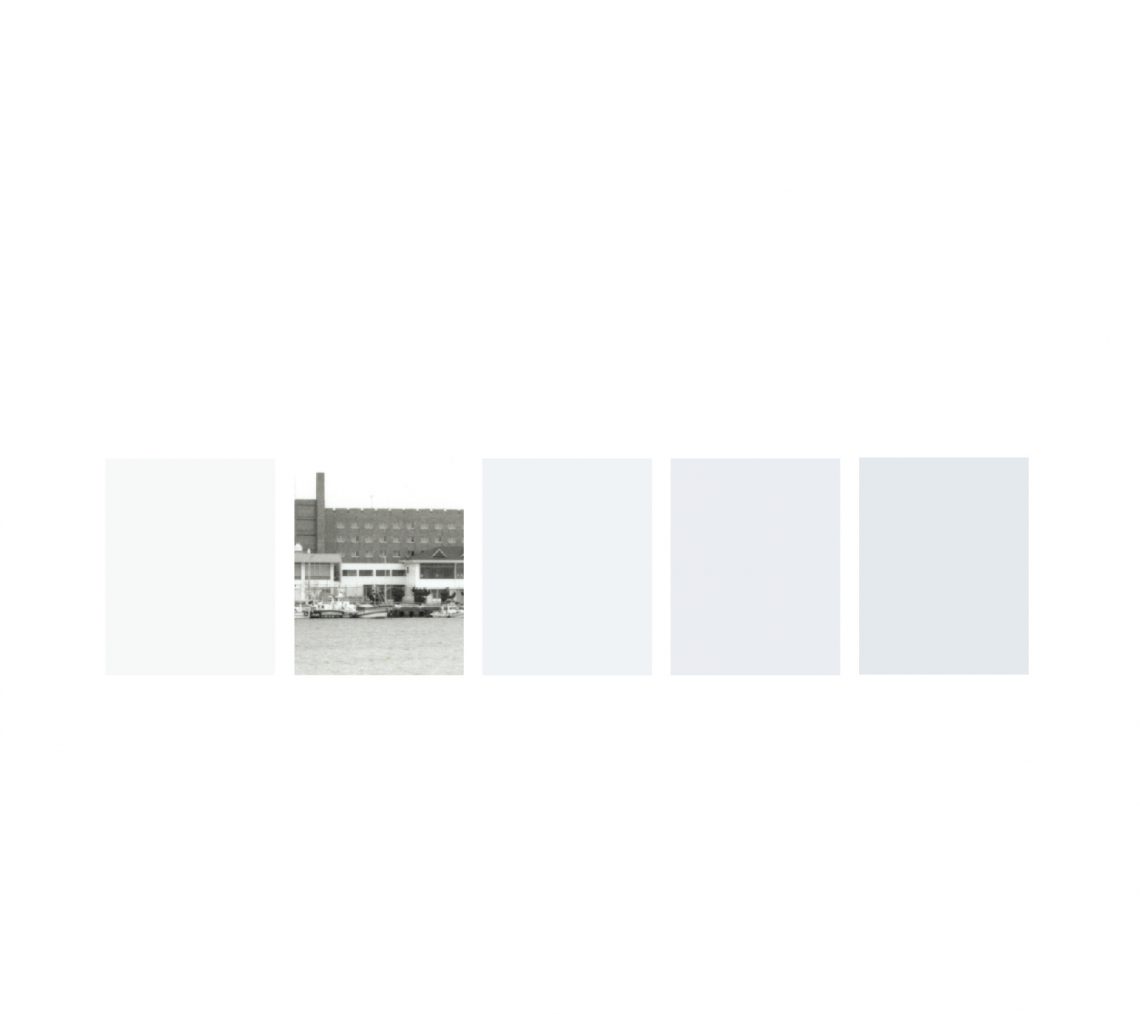
Disc #2
With a better sense of Toshiya Tsunoda’s intentions, I dove into Disc 2. Track 1 begins with a high-pitched and occasionally painful ringing. Consulting the liner notes I learn that it is a recording of cicadas and birds recorded inside two bottles. The sounds within the two bottles interfere at times creating unexpected resonances. The bottles act as resonating chambers with the sound reflecting back and forth and around the walls of the bottle, acting as both a high-pass filter and a delay line. The bottle vibrates along with the air within it. Listening to Track 1, I become viscerally aware of the physicality of the sound, and the bottle, and how they interact together as a system.
Track 1 is over sixteen minutes long. Toshiya Tsunoda writes that each work is the length of the original recording. While I admire the integrity of this concept, I must admit that Track 1 tried my patience and pushed up against my pain threshold. At the fifteen-minute mark I reduced the volume.
Track 2: Another mic inside a bottle in a park with a helicopter overhead.
My enthusiasm is waning. Fortunately, Track 3 and 4 are shifted down several octaves.
Track 4: A curious drone recorded inside a drain hose with mysterious occasional banging sounds.
It’s a beautiful, lush piece of sound with just enough variation to keep my interest for the first seven of its eleven minutes. I began to wander off into my own zone until I heard the sound of a speeding car during minute 8. I was back inside the house where the world was an embryonic, pulsating hum.
Track 5: Water running through a fifty-eight meter polyester duct.
The sound of water—mizu no oto—the final line in Basho’s beautiful Frog Haiku. [iii] This is what I hear, the sound of water, with a low frequency rumble and two dissonant higher frequency resonances. It is beautifully recorded. Surprisingly, I locate the water to my near left, well outside the stereo image. Then there are gorgeous chimes in minute eight. Perhaps I am warming to Toshiya Tsunoda’s project because I find all 14:42 of this track to be a delight!
Track 6: Recorded in a rainwater downpipes attached to a silo.
This piece is much more quiet and gentle than the previous tracks, and is much more typical of my initial impression of Toshiya Tsunoda’s field recordings. It is slow moving, similar to a Steve Roden work, but distant and quiet as if it’s behind a veil. This piece skates along the line between field recording (location) and a way of listening to sound (acousmatics). I am both in the sound and listening to a place.
Track 7: Recorded inside a plastic float as a ship passes by.
Listening, I consider how these sounds could only have been created in this way—a mic inside a plastic float. Oscillators, Euroracks, Max/MSP manipulations, none of these can make this sound that is so simultaneously of this world and otherworldly. I recognize how good this recording is, and I am sharing Tsunoda’s excitement in the moment that he revealed this sound with his probing microphones. As I listen, I share with him a sudden sympathetic panic—are the batteries charged, is the record button pushed, has the signal clipped, please God don’t let the cable connections screw up.
Track 8: A recording of mics placed in a small cavity on a cliff with the sound of waves crashing.
Some of these tracks are more interesting than others, to me.
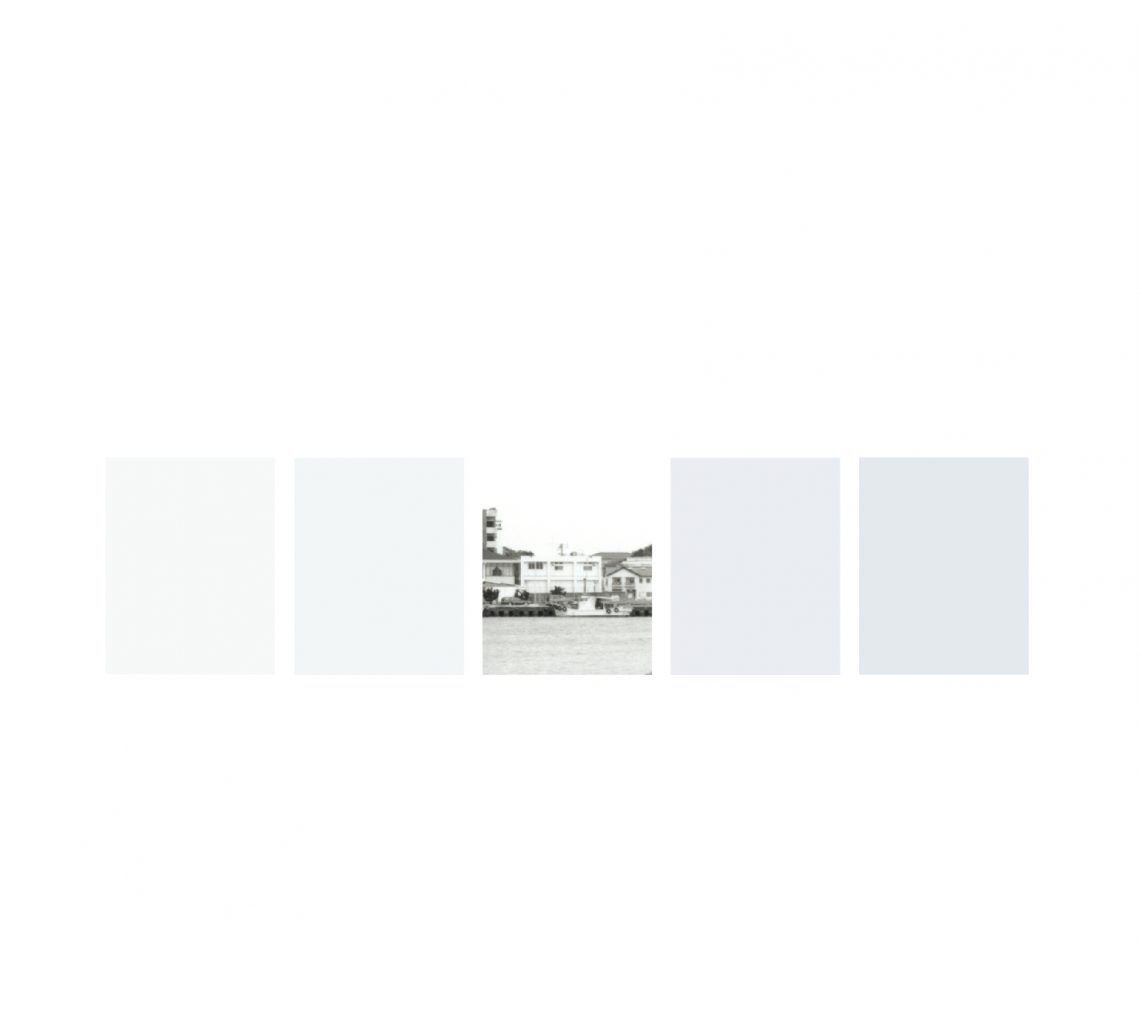
Disc #3
Disc 3 is a collection of recordings of solid things vibrating as opposed to hollow things in Disc 2 or the stationary waves of Disc 1. He is using piezo disc contact mics for most of these recordings.
I took a break after Disc 2. As I begin Disc 3 it is raining heavily outside and my phone is issuing tornado warnings.
Track 1: Contact mic attached to a steel plate leaning against a wire fence.
I’ve made recordings of wire fences, and I recognize the distinctive vibrations and groans recorded. What is different is the low frequency drone in this recording. Toshiya Tsunoda explains that it originates with a truck idling nearby. When it suddenly stops around minute seven, space and an awareness of distance appear with a suggestion of “place.” I have continued to puzzle over his distinction between “space” and “place” in his introduction to the liner notes. What is this notion of “space” that he privileges? I begin to understand that this forms a part of the organizing principle of the archive. “Space” refers to the type of resonating system he is recording—chamber, object, solid, air. Part of Toshiya Tsunoda’s creative process is characterizing and organizing these recordings into a whole of some kind—an archive.
Track 1 is a killer!
Track 2: Another wire fence, this one vibrating in response to passing cars.
These recordings on Disc 3 are more sonically diverse than on Disc 1 and 2. There is a wider frequency spectrum and more dynamic change. I am intrigued by how these are everyday subjects, things we hear all the time, but he filters them through different mediums of vibration—resonating air, solid metal, long metallic strands, hollow tubes.
Track 3: Road surface vibration with an electric screwdriver.
The concept of this one is kind of thin, but its similarity to a drum machine might explain its inclusion. This allows me to consider just what his criteria for inclusion might be. I begin to admire how he is not persuaded by conventionally pretty, musical sounds; or pristine natural sounds. Very few of these recordings would get high marks in a field recording class. This is what makes them so intriguing and beguiling.
Track 4: A recording of the pavement of a pier with two ships idling and the crackling of sea creatures.
His explanation of the sound seems, at first, more interesting than the sound itself. He is really good with explaining about the interference of two waves, and in this case the binaural beating that occurs. He includes this recording as an example of an interesting phenomenon. The sound is neither beautiful nor suggestive. We are asked to listen as he listens. In this case I am listening to the sound as the interference between two waves. As I do this my perception shifts. I realize that a scrap of metal resting against a fence is not just a rusting bit of trash, but can be an entrance into a new sonic universe.
Track 5: Contact mic on an asphalt road and bottom layer of vibrations from warehouse district.
This one hurt my ears. It is a low frequency hum with minor variations. I wonder if this is the same low frequency drone that one hears through the air. I wait for the track to end.
Track 6: Iron door of a hut next to the sea.
(Caution: lower the volume before this track!)
This is a complex vibration with high, middle and low frequencies parts. The higher register is painful, I’m not sure why. The middle register sounds like a bell tolling. The lower register rumbles incoherently. And then it’s over!
Track 7: Recording of a piece of metal two meters long in the port.
After surviving Track 6, Track 7 is beautiful! There are two distinct pulling or beating zones, which seem unrelated. The less distinct pulsing captures me, although it is always overwhelmed by the higher, louder beatings. Listening to this in the midst of the quiet of the economic shutdown, I consider that this is a recording of the sound of an industrial city, late stage capitalism, the last gasps of the industrial world.
Track 8: Contact mic on surface of gas cylinder, sounds of transport vehicles.
I try to wrap my head around the situation that he describes in the liner notes. How big are these gas cylinders? The sound is more of a singing, like the middle register in Track 6. The ringing of bells has a positive association. In spite of the occasional dissonant wheels, I can’t help but feel calmed by it. The space of this recording, and I refer to the perceptual space, is large and mysterious. It is an interior of infinity. In the seventh minute the second of his two “takes” begins as a shift in frequency of the drone. This, too, is beautiful anchored by the tolling bell-like sound, which evolves very slowly with only occasional and unexpected attacks. I am suddenly reminded of the Celeste Bousier-Mougenot’s piece with the birds on a guitar From Here to Ear with the long sustained metallic notes. But where are the harmonic changes coming from?
Track 9: An empty drum by the ocean with contact mics.
Since this was the final cut on the disc, I felt safe in turning up the volume. I hear cars and waves, but these sounds are wonderfully muffled. There seems to be a cut-off of the highs almost like listening to just the woofer in a two-way system. It’s calm and soothing, and I think about how this must be similar to the experience inside the womb. I now understand Dale Lloyd’s interest in his Muted Stories. [iv]
It is a beautiful way to end Disc #3.
I took another break before beginning CD #4.
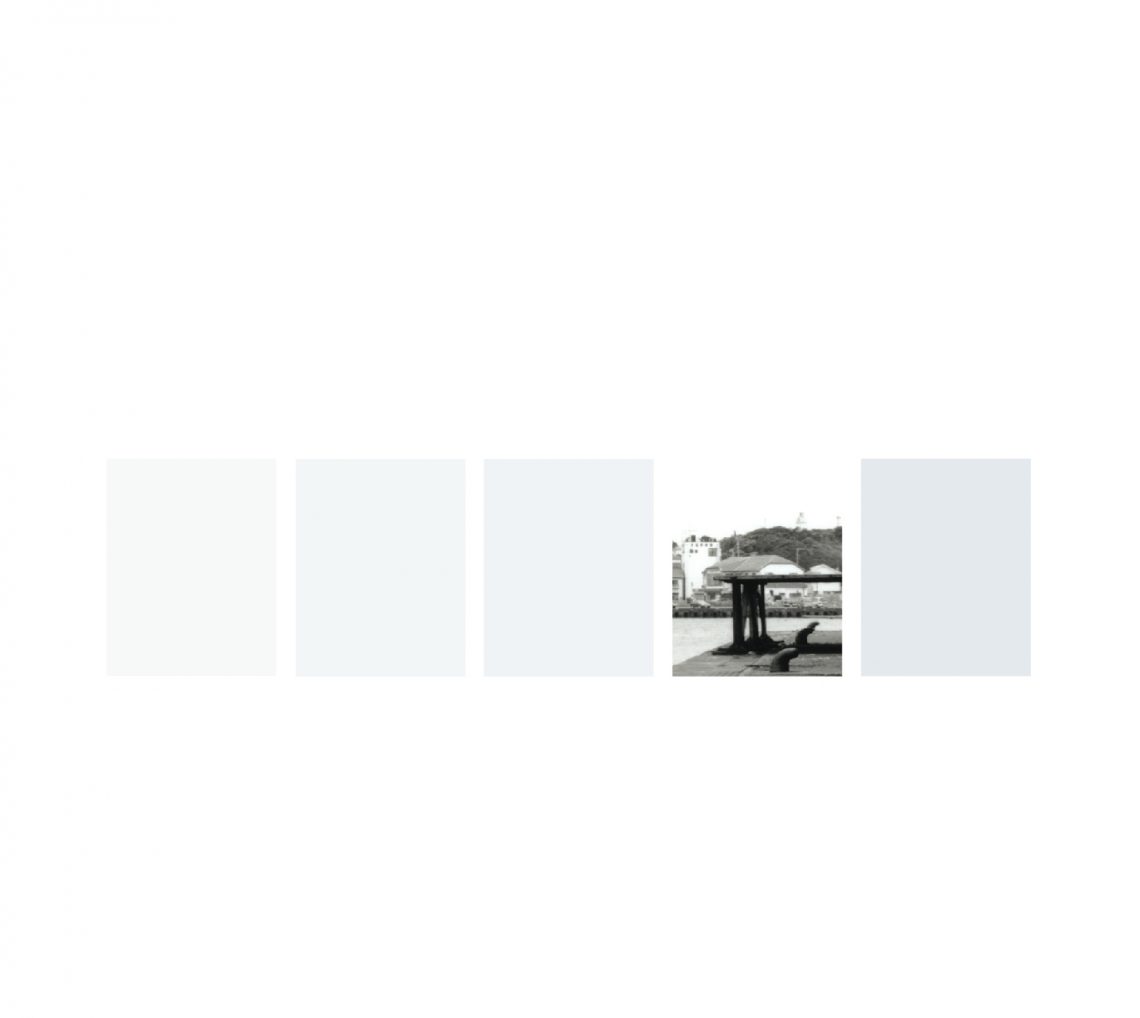
Disc #4
Disc #4 consists of recordings made at Nagaura Port, which are edited into one seamless passage, although tracks are separated and labeled and identifiable from the CD player. Toshiya Tsunoda refers to these recordings as multiple vibrational phenomenons.
Track 1 begins with an uneven rumble, which has an odd phase issue with my ears. This sifts suddenly to Track 2, which has some “air” in it. Track 2 was recorded with a microphone in a gap between a ship and a pier. The low rumble of Track 1 re-emerges within Track 2.
Track 3 was also recorded with a microphone, rather than contact mics. A low drone provides an ambient bed, not unpleasant, with occasional descending phrases and voices. When I hear the voices, I recognize the resonant sound of a chamber. Consulting the liner notes I confirm that this mic was placed inside an iron pipe. The first time I played this track it had some digital glitches that made it continue to repeat between 1:00 and 1:30. At first I accepted this looping as part of the piece, but when I realized how uncharacteristic of Toshiya Tsunoda’s work this was, I got up to investigate. I cleaned the CD and listened again successfully. This experience did raise the question of intentionality.
Track 4 is quieter and subtler. It appears to be contact mics on a fence. Once again I get a feel for Toshiya Tsunoda’s sense of discovery. These vibrations are not inherently unfamiliar; they surround us in our daily lives. By going to a place with extreme vibration, like Nagaura Port with ship engines idling, trucks, general busyness, he is able to explore the interactions of these vibrations and how they affect each other and combine in unique and unexpected ways. I can imagine his excitement in attaching a contact mic to a new surface and discovering a completely unique sound. It reminds me of my excitement with my microscope as a kid—how thrilling it was to examine a new sample of pond water with those mysterious little creatures swimming around. And with this track, I love a good drone, too.
Track 5: The sound of a metal processing plant brings me abruptly back to the present from wherever I had wandered. I hear machines and repetitive jangling and whipping sounds. I think, a conveyor belt. The track is over before I am able to get inside the sounds.
Track 6 was recorded inside an operating silo. Like the previous track, this begins with a burst of sonic energy and quiets just as abruptly generating a silence from which a gentle solid-state sound, higher than a hum, emerges and is then crushed by the return of cacophony.
Track 7 is a contact mic recording of the vibrations on the surface of the wall of a warehouse. This piece is gentler and quieter with a drone bed and “environmental” sounds, likely a forklift.
Track 8 is described as an unknown solid vibration. I was curious about why Toshiya Tsunoda would include this work. His logging of recordings seems so meticulous and precise, why include one that was not logged? Track 8 is similar to track 7 but without the “environmental” sounds. I am able to concentrate more on the droning sounds. I realize that this is a great example of complex vibrations with weird overtones and harmonics!
Track 9 is a re-appearance of the contact-microphoned fence from Disc #3. I love the groaning of the metal fence, and the underlying drones on the low end and middle contribute to a sense of tension. The occasional bangs contribute to this suspense. These occasional bangs travel along the fence like a plate reverb and are thrilling. I’m thinking of Lee “Scratch” Perry. This fence should be preserved as a Japanese National Treasure! Track 9, which clocks in at twenty-five minutes is one of my favorites. The longer I listen to these strange vibrations of Tsunoda’s, the more I hear. I recognize certain reoccurring motifs. I begin to untangle the complexities of the interfering cycles. I enjoy the visceral pleasure of low frequency humming, and I am charmed by Toshiya Tsunoda’s inventiveness and curiosity in discovering and recording these sounds. As with all compelling art, I find within it my own discoveries and challenges and a desire to listen with fresh ears and an open mind to the world [Written during the Covid-19 pandemic quarantine, when the world became quiet again.]
Track 10 is the final track of Disc #4. It is a solid-state drone recorded within a pipe along a roadside. This drone is rich in harmonics with an upper register that seems to purr. On the bottom is a throbbing, throaty humming. This seems a fine way to end the CD and finish the archive. An occasional disruption reminds me that it is a “live” situation open to chance elements and random occurrences that interact with the constant air vibrations. The track fades, and it’s over.
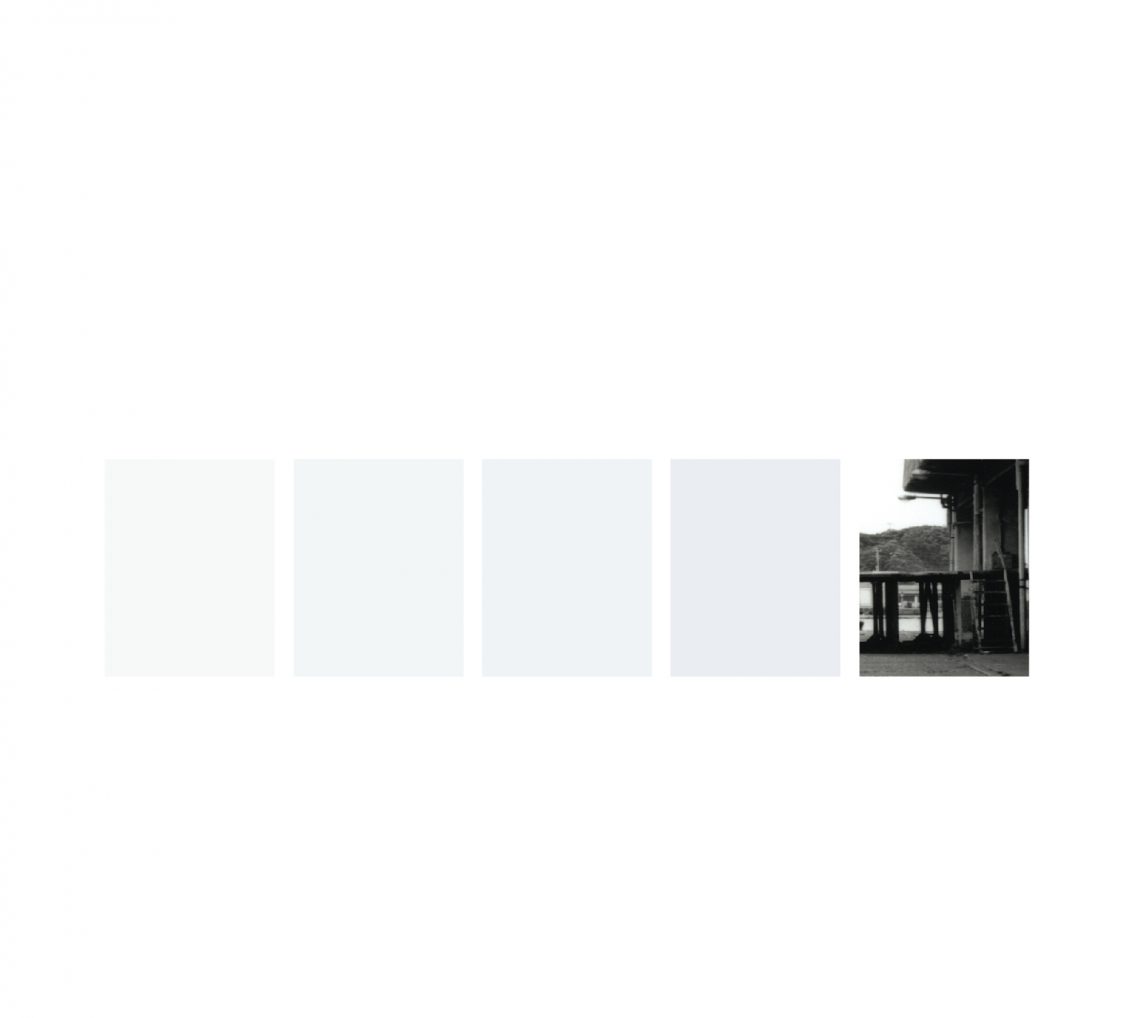
Disc #5
Reflection revisiting
In Disc #5 Toshiya Tsunoda revisits some of his previous recording spots and approaches his material with a fresh attitude.
Track 1: Vibration of a rope that is transmitting the vibration of the boat engine and reflecting the change in tension as the boat drifts in and out.
There is a hypnotic quality to this drone as it raises and lowers in volume. I can sense the steady in and out of the water. It is another way of listening to the ocean. The waves rise and fall, quite literally. I can visualize the rope growing taut, and then relaxing. I find it interesting that this is the first track that really generates a clear visual image. I also reflect on how much almost all of these sounds depend on motors.
Track 2: Long thick rope 150 meters long rubbing against the sand where it touched the beach.
In contrast to track 1, this track is pure sound without visual suggestions. It is gritty and prickly as contact mic recordings often are, and more percussive without a motor-driven drone. There is a scraping and gentle rhythm of up and down. I hear an occasional gurgle of water and think of Basho again.
Track 3: Inside a pipe by the ocean, one end in the water.
The beauty of this recording states itself immediately. The pipe creates a resonant chamber that amplifies some frequencies creating a beautiful drone, along with the clear resonance of the pipe itself as it is struck by the water. The sound of water is emphasized and amplified within several frequency bands.
Track 4: Same pipe, different position.
This is another killer track. The gentle movement of high frequency water—can I call it a trickle? —along with the pulsating hum below, create a perfect composition of sounds all contributing to a whole. I am interested in how Toshiya Tsunoda must have engineered this situation by moving the pipe into another position. So this is not exactly “found sound,” in this instance he created this situation.
Track 6: Two microphones, each in a bottle and facing each other.
Again, my admiration for Toshiya Tsunoda is felt. He has certainly perfected his technique. He writes about his interest in the “observation point.” I’m not really sure what he means by this beyond the obvious—here one is hearing from within a bottle, somewhere one could never otherwise find oneself. There is something wonderfully contradictory in this posture. Hearing is so much located in our body. We hear where we are, where our body is. We locate sounds in relationship to our bodies—to the left, right, front, back, up, above, below. How do we find ourselves inside a bottle?
Track 7: Two microphones in two empty glass bottles a short distance from each other.
This is another of his recordings with disturbing dissonances and overtones.
Track 8: Vibration of the solid pier from Disc #1.
Quiet clicking and soft gurgling sounds, which are very different from the corresponding track on Disc #1. A gentle murmur of a rumble comes and goes and an occasional suggestion of friction. This recording is very much in the genre of the work of Toshiya Tsunoda that I first heard and which drew me to him. It’s quiet and subtle, yet unexpectedly interesting. The sound remains sound first—acousmatic—as my mind tries to catalog and identify, but is rebuffed!
Track 9: Contact mic on a rope (left channel), another on pavement (right channel).
From my listening position I cannot distinguish between the left and right speakers’ sound. It blends into a motor, not unpleasant, but rather common at this point. At about three minutes, however, more complex harmonics begin to emerge. I suppress the urge to hum along, and then I don’t…
Track 10: Ambience inside a former fish market.
This seems to be an uninhabitable space, an interior that is large, noisy, and reverberant with what the liner notes identify as an icemaker machine. The sound from the icemaker provides the dominant drone with occasional overtones emerging in a harmonic manner. Various bands and attacks fill the space elastically and a motor, scooter passes by outside. The articulation of inside and outside spaces brings me back into this rather inhospitable place. It’s big, and dark and cold. It’s a long piece, and since I imagine that I don’t like this place, I move my concentration to the sounds themselves; not as signifiers of location or place, but as soundfield. I turn up the volume for a more immersive experience. The drone of the machine begins to sound like an orchestra tuning up, which moves my position in relation to the sound farther away.
Track 11: A road surface near the ice-making machine from above.
This is an exceptionally pretty collection of frequencies. The interval is identifiable. It was over too soon!
Track 12: Same as Track 11, but different.
Track 13: Omni microphones placed eleven meters apart on the edge of the water/ocean.
This is one of the more conventional field recordings—bird and water. Rob Danielson on the old Naturerecordists list used to advocate for very wide spaced omni microphones. In this instance, it does create a dramatic panorama of space. I love that the airplanes pass overhead; I hear a barking down in the distance and a bird chirping nearby. Together they create a scene of near/far, left/right, up/down. The inclusion of all these sounds, which are often filtered or edited away by nature recordists, is refreshing. This track is an excellent example of Denis Smalley’s notion of “spatio-spectral-morphism” with far fewer words.
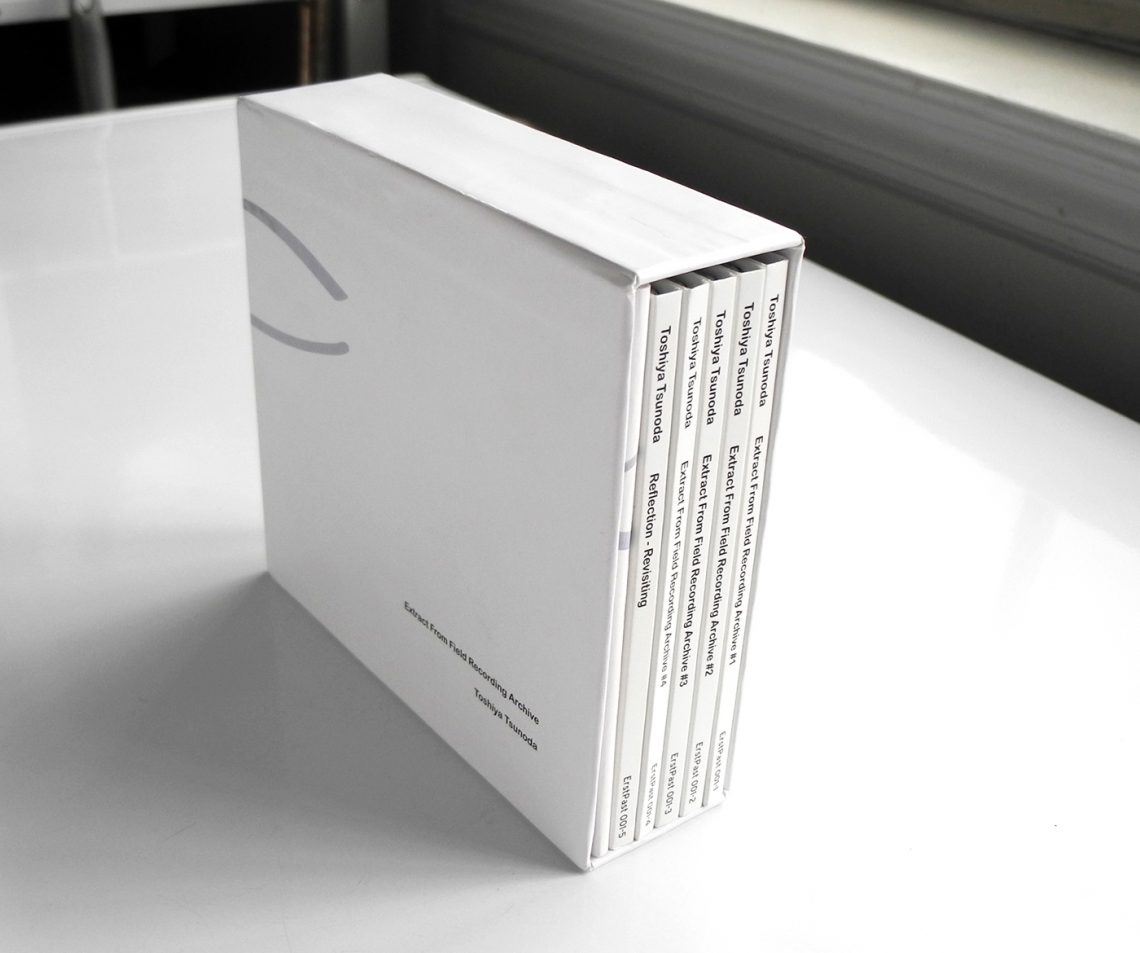
And then we are finished!
Some final reflections:
It is interesting that Toshiya Tsunoda calls these works an “archive.” He is consciously choosing to steer clear of musical or aesthetic terms like composition, soundscape, or suite.
Webster defines an archive as, “a repository or collection especially of information.”[v] Whereas a composition is an, “arrangement into specific proportion or relation and especially into artistic form.”[vi] Toshiya Tsunoda wants to remove the appearance of aesthetic judgments in the creation and assembling of these works. An archive has a neutral non-judgmental appeal. It is something that is collected through a series of specific procedures. The National Archive (NARA) collects all the acts of Congress, all presidential directives and federal regulations.[vii] The National Archive does not make distinctions between acts of Congress that it likes or dislikes— it collects them all.
With the use of the term “archive,” Toshiya Tsunoda is suggesting that he is collecting sounds within certain defined parameters, and he is not making aesthetic distinctions in his collecting. He has defined for himself parameters of vibration—solid, hollow, combined—and set about collecting the sounds of these vibrations. By pre-determining what will be included in his archive, he is removing the filter of “aesthetic” judgment and allowing himself a more expansive and inclusive experience. Toshiya Tsunoda begins by focusing on non-traditional, non-musical and everyday sounds that would otherwise be dismissed as noise. He collects them as specimens without prejudice; he records all vibrational sounds seemingly without regard to “aesthetic” quality.
An archive also suggests lots and lots of recordings stored in metal boxes on shelves in a cool, dark place. Is there much more to the archive? Is this a deep dive into the archive, or is this it? If there is more, how were the selections made? What criteria was Toshiya Tsunoda using?
Of course, this is not a scientific survey, or even an ethnographic one. It is not even a comprehensive study of the Nagaura Seaport. It is a deeply personal and eccentric collection of un-manipulated field recordings. I can only imagine that he has selected from his archive what he considers the most interesting of his sounds. He likes complex wave interference, as in Disc #2, Track 4 or the unlabeled Disc #4, Track 8, but he almost never resorts to familiarity. Although Disc #2, Track 3 does kind of sound like a drum machine, finding sounds that remind him of “music” is not part of his criteria, and this is significant. The unconventionality of these sounds which could easily have been dismissed as unwanted noise, is part of what makes them so intriguing. It is so difficult to push outside the envelop of the acceptable, and I believe that one has to trick oneself into unearthing this kind of material.
John Cage with his use of “silence” and chance techniques was an attempt to listen to the unlistenable, to bring to consciousness that which was previously inaccessible. Toshiya Tsunoda does the same by creating this frame of the archive. Using the concept of the deadpan documentarian, Toshiya Tsunoda has given himself the space to unearth unimaginable sounds. Eschewing compositional structure and presenting work as an archive allows him to present these sounds without the constraints of musical or even classic field recordists’ structures.
Something must be said about the sounds, themselves. What do they mean? Is there a message here? I have to confess that spending years listening to things, literal meaning has never been very important to me. I do know and deeply respond to the words of “Visions of Johanna,” but lyrics have never been what I listen to in music. The same attitude informs my looking at art. I have no idea if Anne Truitt’s sculptures have meaning, but they have an amazing presence and make me reflect on the act of perceiving and being alive while standing in front of them. These sounds of Toshiya Tsunoda’s have the same effect on me. I don’t know if they are ultimately a comment on our post-industrial society, or a rebuttal of Acoustic Ecology. What they do for me is make me listen.
I find it curious that although these sounds are phenomena that Toshiya Tsunoda found, recorded, and collected, I very much feel that they are his sounds. As Arlette Farge suggests “An archive presupposes an archivist, a hand that collects and classifies.”[viii] Toshiya Tsunoda in disguising himself as an archivist has created a deeply personal, innovative, and intensely interesting work of art.
Listening to:
Extract from Field Recording Archive
Toshiya Tsunoda
5 Volume Box Set
Erst Past E<001-5
Scott Sherk
Endnotes:
[i] https://www.thewire.co.uk/in-writing/essays/quiet-storms_toshiya-tsunoda
[ii] https://www.gruenrekorder.de/fieldnotes/
[iii] http://www.bopsecrets.org/gateway/passages/basho-frog.htm
[iv] https://and-oar.bandcamp.com
[v] https://www.merriam-webster.com/dictionary/archive (accessed 05-04-2020)
[vi] https://www.merriam-webster.com/dictionary/composition (accessed 05-04-2020)
[vii] https://en.wikipedia.org/wiki/National_Archives_and_Records_Administration (accessed 05-04-2020)
[viii] quoted in Lost Children Archive by Valeria Luiselli, Alfred A. Knopf, NY 2019 original text in The Allure of the Archive, by Arlette Farge, page 3, Yale University Press, 2013
Bibliography:
Scott Sherk is a sculptor who often works with sound. He has exhibited widely including exhibitions at the Katonah Museum of Art, the Allentown Art Museum, Kim Foster Gallery NYC, and Leslie Cecil Gallery NYC. His exhibitions have been favorably reviewed by the New York Times and ArtForum. His sound work has been released on CD by 3Leaves, and/OAR, and net releases by Stasisfield and Wandering Ear.
Scott Sherk was a Professor of Art at Muhlenberg College. He has been a recipient of the Class of ’32 Research Chair and twice recipient of the Hoffman Research Fellowship. He currently holds the position of Professor Emeritus. www.thethirdbarn.org





